Publications Update: West Sussex Monographs, Occasional Papers and reports.
Publications Update: West Sussex Monographs, Occasional Papers and reports.
The most recent group of publications from TVASPress has expanded the amount of published information for the region. TVAS, and TVAS South, have carried out several large scale excavation in the region with many smaller excavations and investigations helping to build a larger picture of the historic landscape.
The Monographs cover several large sites. The first of these, Monograph 33, covered a large area of land at Courtwick Lane in Littlehapmton. The excavations revealed a broadly agricultural landscape of late Iron Age to Roman (3rd century) date, comprising large enclosures and droveways. A large, possibly defensive, ditch of Iron Age date suggested a substantial settlement within the vicinity, though structures of this date were not encountered. Eighteen Roman cremation burials of 1st-3rd century date were recovered from the enclosed areas (11 urned, 2 unurned and five token or redeposited human bone). Several Saxon sunken-featured buildings and a possible timber post structure indicate a small Early Saxon settlement on the site. Over 800 struck flints suggest limited activity in the Mesolithic and Neolithic periods (a single pit was the only Neolithic feature), while small numbers of pits represent limited Bronze Age and Middle Iron Age activity.
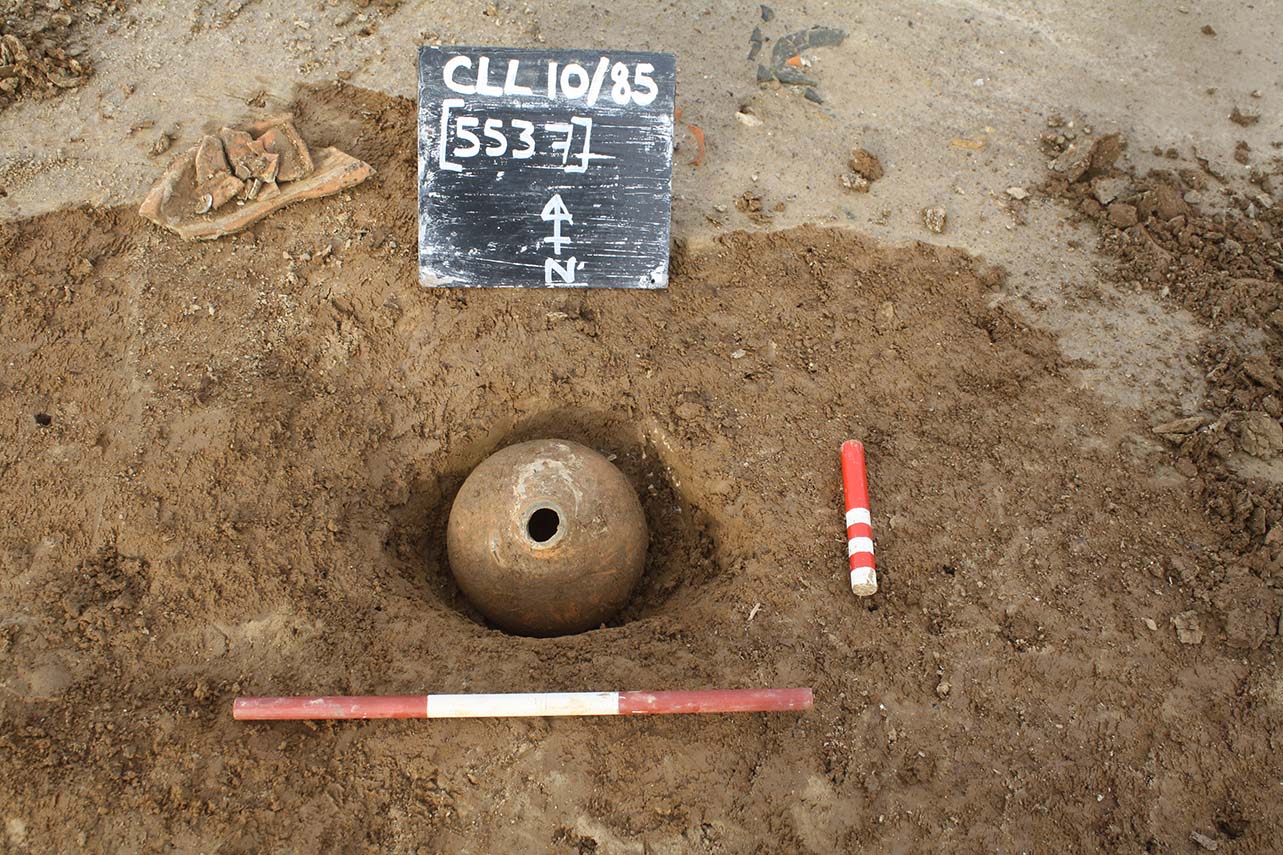
The excavation of a nearly complete pot from Courtwick Lane.
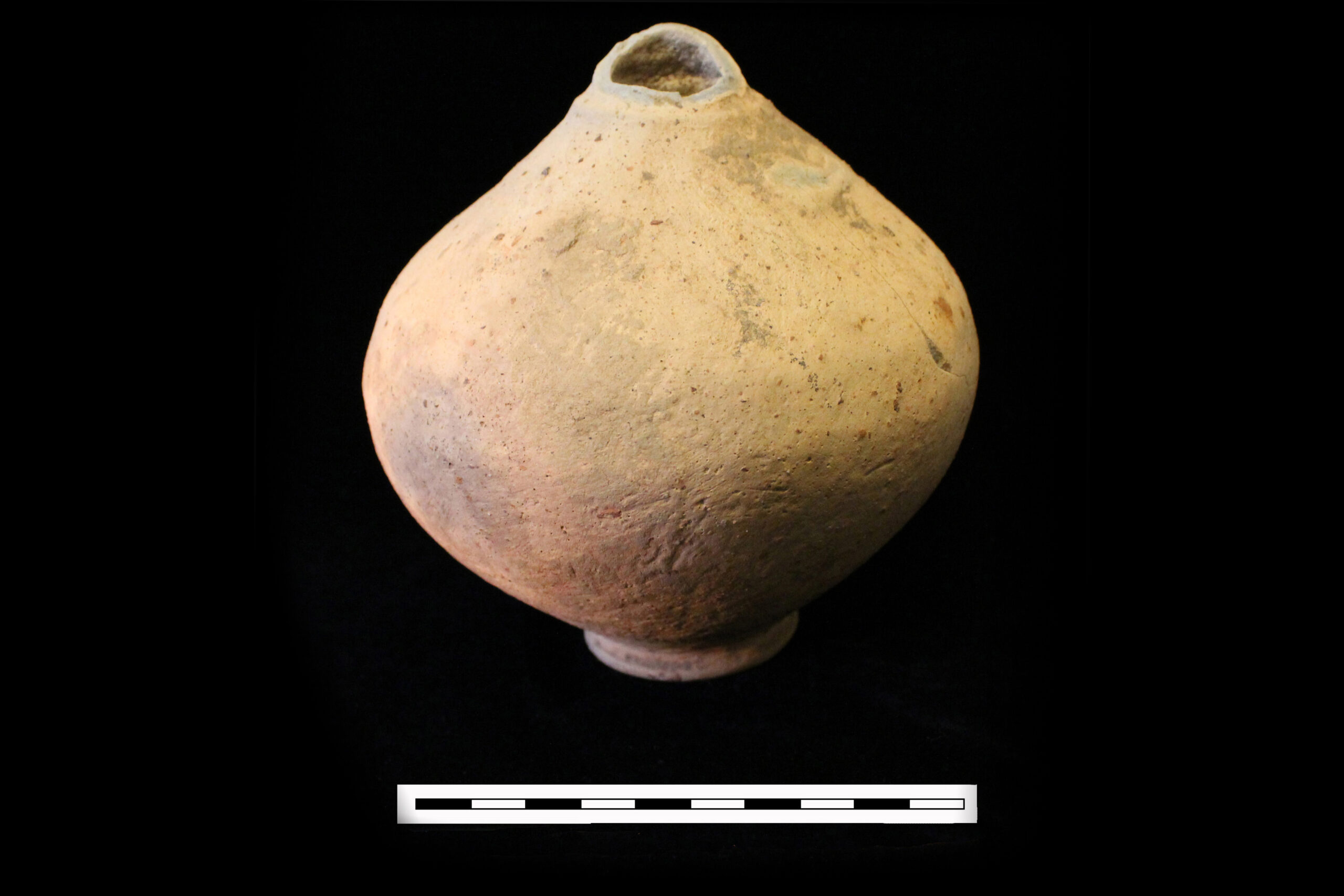
The same pot after cleaning.
Monograph 34 covers an excavation covering 4ha on a site to the north of the Goring Roman villa complex, which had been rescue excavated in the 1980s. A few late Middle Bronze features present tentative evidence for occupation along with ephemeral traces of a possible field system. The Later Bronze Age to Early Iron Age is represented by post-built roundhouses and possibly ring-gully structures, extensive spreads of pits and postholes comprising unenclosed and seemingly unstructured settlement. This was succeeded in the Middle Iron Age by distinctive ring-gully structures. Four radiocarbon dates define the chronological extent of this phase. Economic data show a typical range of domesticated animals and cereal production, though few facilities for large-scale storage of grain. Late Iron Age use maintained the pattern of the Middle Iron Age settlement, with further ring gullies, a stock enclosure and a long curving boundary ditch. Again the Iron Age pattern of settlement seemed to influence Roman use of the site with little evidence for disruption. Roman occupation, of modest status typical of rural settlement, included a large stock enclosure and a series of paddocks while respecting the Iron Age boundary. The pattern of economic production is again unexceptional. Roman occupation continued into the 3rd century after which it may have transmuted into the Goring villa complex. The settlement, including the villa complex, appears to have gone out of use at the end of the 3rd century AD. Also included are a summary of results from excavation at Lower Northbrook Farm, and explored the remains of Northbrook Mansion tracing its development sequence.
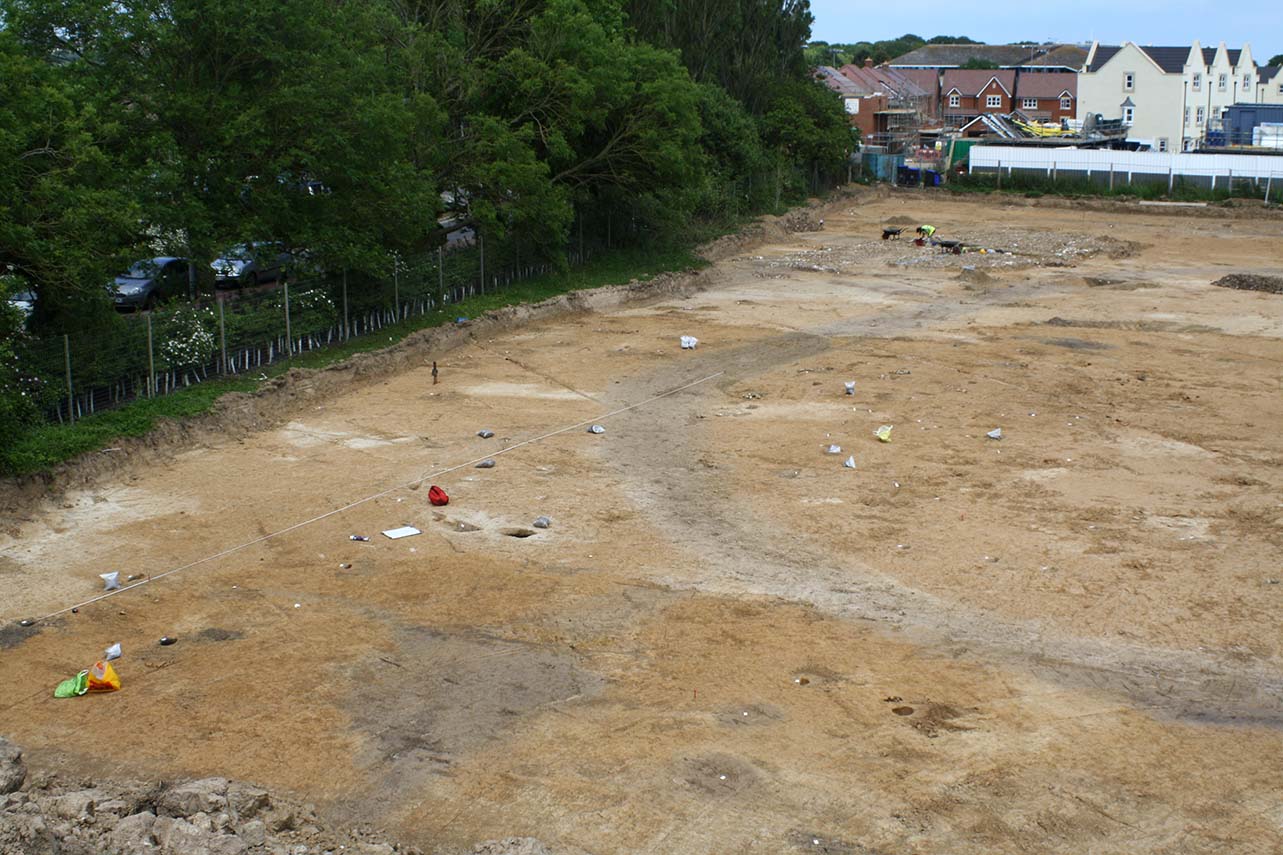
The excavation at Northbrook college.
Monograph 37 covers excavations in advance of an extensive development at Littlehampton, on the West Sussex coastal plain, examined part of an large multi-period settlement complex comprising deposits principally of later Bronze Age, Iron Age and Roman dates. One large site north of Toddington Lane and one smaller site to its south were investigated in ten areas based on the results of earlier evaluation, but it is clear that a substantial contiguous settlement complex that had extended for more than 400m had been extensively truncated by previous development on the sites. The Bronze Age deposits included a possible ritual shaft, and for the coastal plain, a rarely encountered ring ditch. The later Bronze Age is also notable for the presence of a field system. Evidence for Middle Iron Age occupation is relatively slight, lacking classic ring-gully houses but mainly represented by enclosure ditches. The majority of the features at both sites belong to the Late Iron Age into Roman period and comprise a complex farmstead. The settlement seemingly flourished until abandonment in the later 2nd or early 3rd century, well before the traditional end of Roman Britain, which is an increasingly observed pattern for sites on the coastal plain. Indeed, the smaller, southern site was abandoned even before this. Apart from farming, the site was not occupied again until the construction of horticultural nurseries in the 20th century. Both sites provided substantial pottery assemblages, and the prehistoric chronology is supported by nine radiocarbon dates. Among the other finds, the number of quern stones is notable.
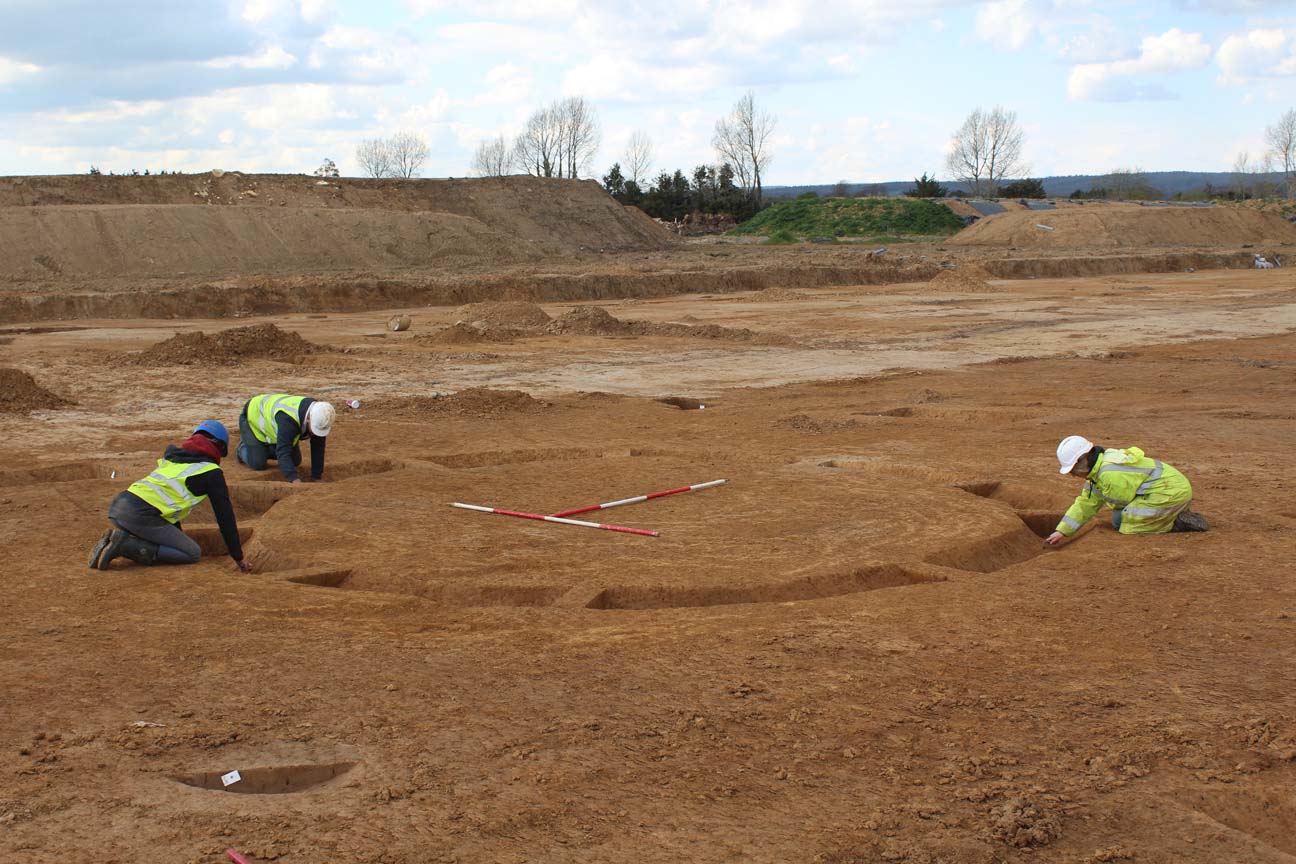
A roundhouse at Toddington lane being excavated.
We also have an Occasional Paper, number 36, which covers excavation at Nutbourne, Chichester. The archaeological excavation revealed two clusters of features, one consisting mostly of pits (or tree-throws) and one mostly of post-holes, which appear to form at least five roundhouses. Overall there is clearly occupation on the site, probably sporadically, from the Middle Bronze Age to the Middle Iron Age. Four radiocarbon dates support the ceramic chronology. Southern English Later Bronze Age settlement displays a wide range of occupation site form. Sometimes this comprises just single roundhouses, as at Gosport or Westhampnett; sites with a greater or lesser degree of enclosure as at North Bersted or Ford Airfield, Yapton; large enclosures, ringworks or proto-hillforts; and burnt mounds as at Patchling. Another form is that of unenclosed, dense groups of pits and post-holes, lacking any obvious organized layout, as at Selsey, and further afield at Ringwood, Hampshire, Knights Farm, Berkshire and Roundhouse Farm, Wiltshire. It is to this latter group that the site at The Paddocks belongs.
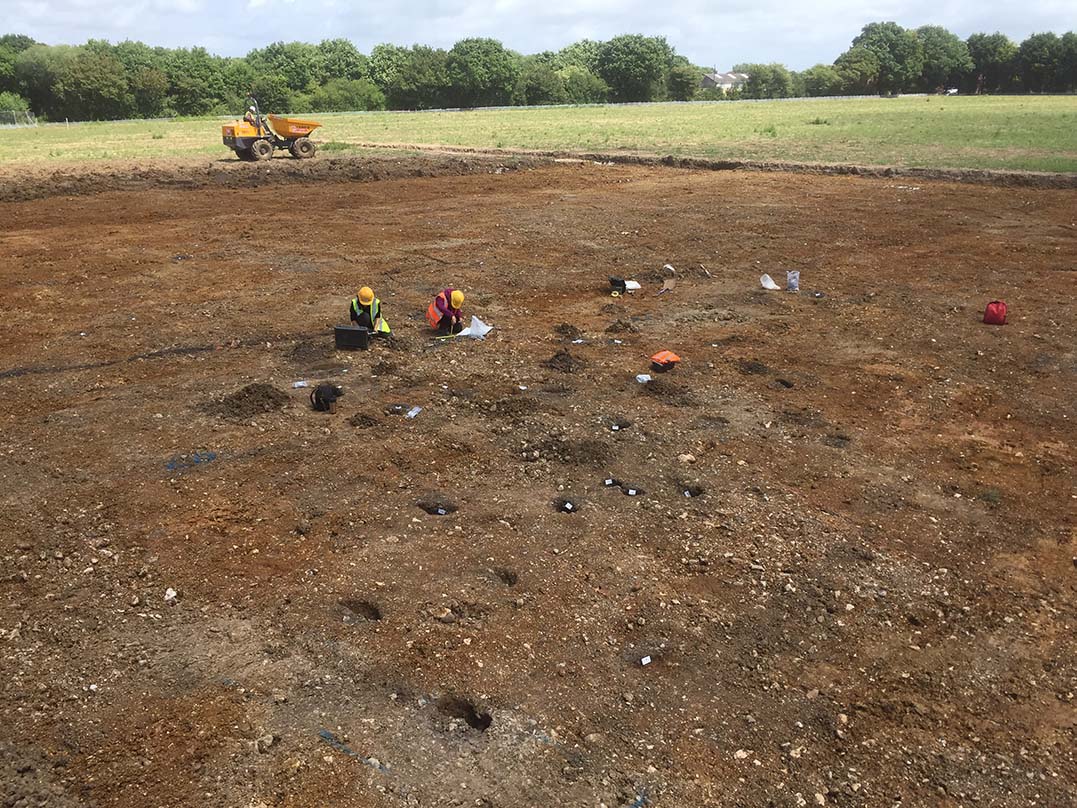
Excavation in progress at Nutbourne.
